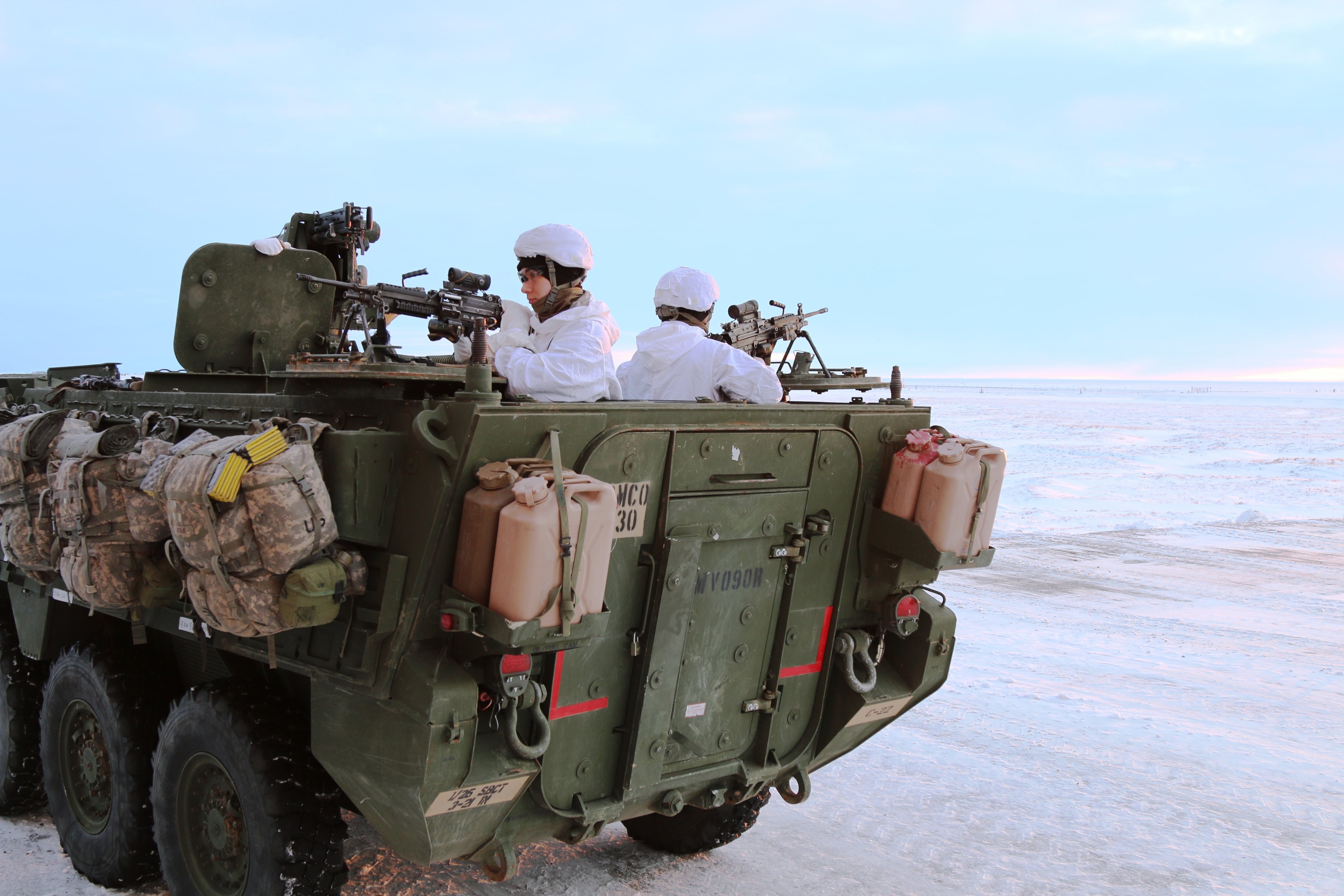The Army's Stryker vehicles deployed north of the Arctic Circle for the first time this week as the service flexed its cold-weather muscle.
About 40 soldiers from U.S. Army Alaska's 1st Stryker Brigade Combat Team, 25th Infantry Division, traveled to Deadhorse, Alaska, for Operation Arctic Pegasus.
The exercise, which took place Tuesday and Wednesday, was a joint, multi-agency event designed to exercise the brigade's rapid deployment capability, according to information from U.S. Army Alaska. It also was a chance to demonstrate the Army's ability to operate in extreme cold weather.
During Operation Arctic Pegasus, Air Force C-17 aircraft delivered the 40 soldiers and their four Stryker vehicles to Deadhorse, where the average winter temperatures range from 11 to 23 degrees below zero.
The record February low temperature is 57 degrees below zero; in January 1989, nearby Prudhoe Bay registered a wind-chill of a whopping 96 degrees below zero, according to U.S. Army Alaska.
Deadhorse is almost 500 miles north of Fairbanks in Alaska's North Slope Borough.
This latest iteration of Operation Arctic Pegasus comes on the heels of an announcement from Russia that one of its military units will be permanently stationed in the Arctic by 2018, according to the Associated Press.
Russian Defense Minister Sergei Shoigu told Russian news agencies in October that the "creation and arming" of the Arctic military unit should be completed by 2018. He also said Russia is building several new bases in the Arctic as well as rebuilding six Soviet-era air bases there, the AP reported.

U.S. Army Alaska soldiers from Bravo Company, 3-21 Infantry Regiment, 1st Stryker Brigade scan the Arctic tundra outside Deadhorse, Alaska, on Nov. 4, 2015, during Operation Arctic Pegasus.
Photo Credit: Capt. Richard Packer/Army
At the same time, the Army's other brigade combat team in Alaska — 4th BCT, 25th Infantry Division — is slated to be converted into a smaller, maneuver battalion task force as the Army shrinks the active-duty force to an end-strength of 450,000 because of budget cuts.
This means the brigade, the only airborne BCT on the western side of the country, will go from about 4,000 soldiers to a task force of about 1,050 soldiers by the end of fiscal year 2017. The Army decision has already drawn protests from Alaska lawmakers.
Despite the cuts, the Army is still working to preserve its Arctic capabilities by upping its training opportunities across the Arctic.
Last fall, soldiers from the 75th Ranger Regiment trained at the U.S. Army Alaska Northern Warfare Training Center for the first time since 2001.
In February 2014, about 40 paratroopers from 4th Brigade Combat Team, 25th Infantry Division, jumped into Deadhorse for that unit's first airborne operation north of the Arctic Circle. Three months later, in May 2014, about 25 soldiers from the 6th Engineer Battalion arrived in Deadhorse for their own three-day Arctic Pegasus exercise.
Some jumped into Deadhorse, while others were already on the ground or flown in by helicopter. The engineers also dropped a Small Unit Support Vehicle, which weighs more than 10,000 pounds fully equipped, onto the drop zone.
Michelle Tan is the editor of Army Times and Air Force Times. She has covered the military for Military Times since 2005, and has embedded with U.S. troops in Iraq, Afghanistan, Kuwait, Haiti, Gabon and the Horn of Africa.




